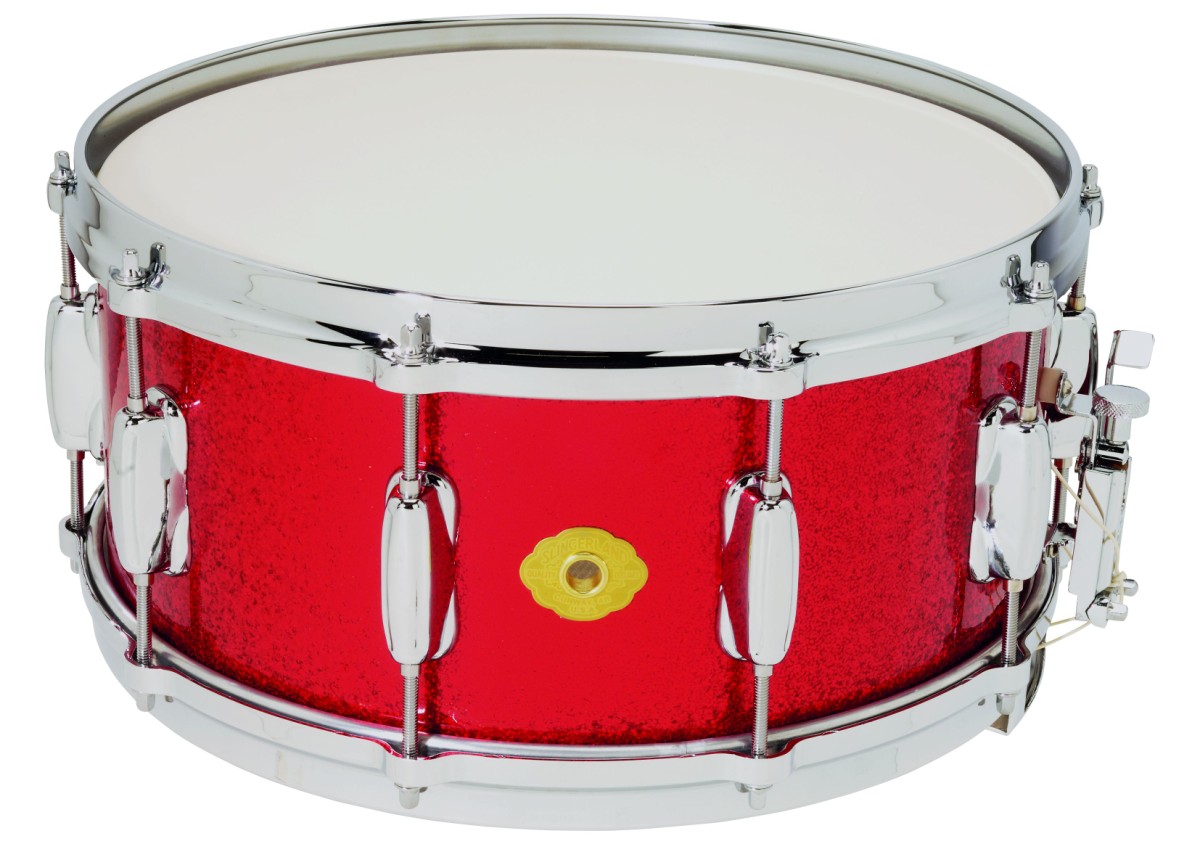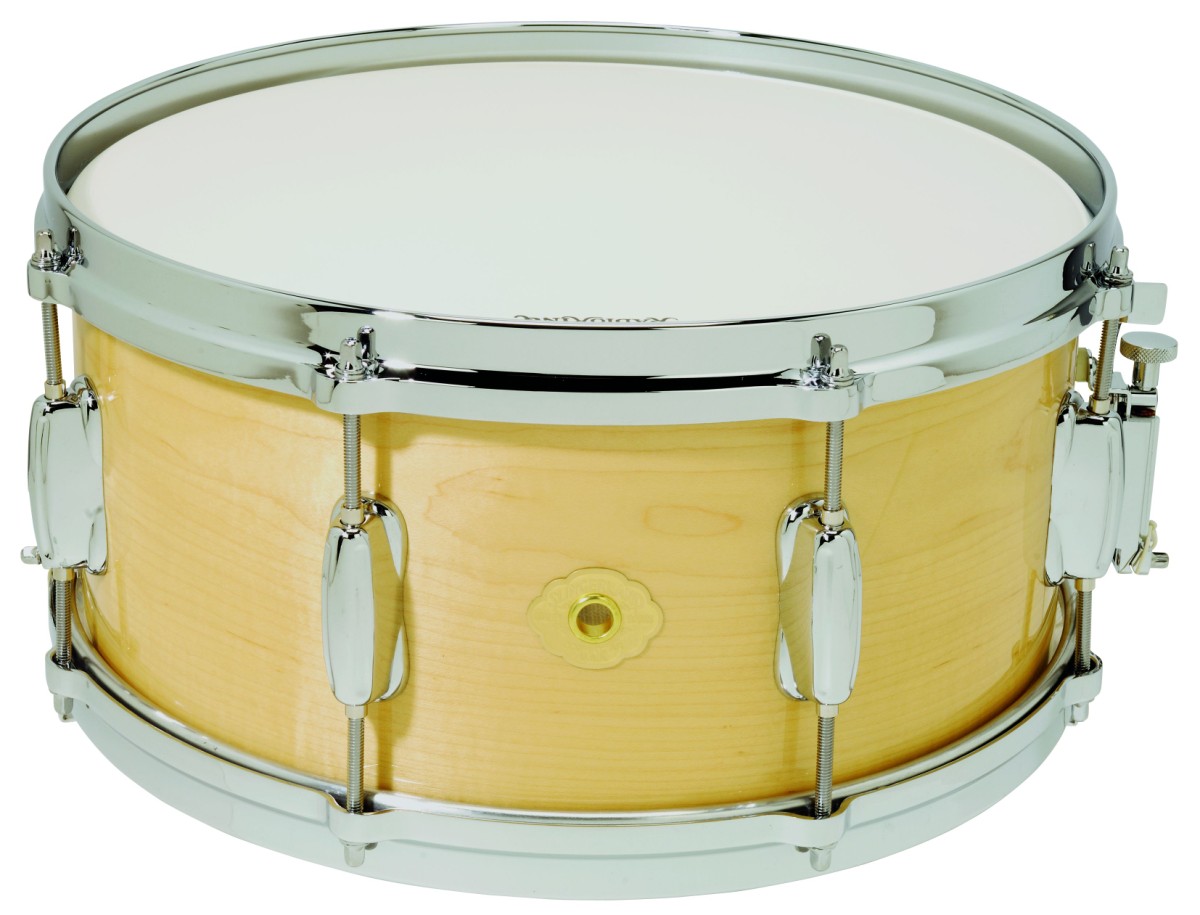MusicRadar Verdict
The shells are the thing and they are beautiful, although we feel that a more luxurious strainer would be appropriate. Just from a cosmetic point of view you might think Slingerland would have pulled out all the stops for such expensive drums. However, the proof of the pudding is in the sound and in that respect, these drums are peerless.
Pros
- +
Those solid maple shells and that priceless tone.
Cons
- -
For this money you might expect a more luxurious strainer and cosmetics.
MusicRadar's got your back





Slingerland made the first modern drums when they produced double-headed toms way back in the '30s. Sidelined since the '80s, Slingerland was rescued from obscurity in 1994 by Gibson (the guitar bods), who gave top drum customiser Pat Foley the job of bringing the marque back up to scratch.
Gibson and Foley set about resurrecting the quality drums for which Slingerland had previously been famous. It was an uphill struggle given the economics and fierce competition of the industry, but Gibson/Slingerland has continued to offer quality products, albeit at premium prices.
The history...
Gene Krupa played Slingerland Radio Kings throughout his career, and they were the drums that Buddy Rich was playing when he went to that great gig in the sky. Krupa's '30s Radio King drumset was the first modern kit, defining the format we still follow today - and the best thing about that set was the snare drum.
The name 'Radio King' originally referred to the outrigger on the strainer that held the snare wires out from the shell.
The feature that was the most important, and the one that makes vintage Radio Kings so desirable today, was (and still is) the solid maple shells. Made from a single ¼" thick plank of steam bent rock maple, held in the round by solid maple reinforcing hoops, Radio Kings kept using solid shells long after everyone else had moved on to multi-plies. For a period of time they were unfashionable, but nowadays, vintage Radio Kings are held as the pinnacle of wood-shelled snare drums.
So how do these new drums compare? Favourably is the short answer. Their shells are simply magnificent. They have gently rounded bearing edges - as opposed to the sharply pointed edges of today's drums - the result of which is a warmer sound with more of the head in contact with the edge, thereby conveying more of the woody timbre of the shell.
Want all the hottest music and gear news, reviews, deals, features and more, direct to your inbox? Sign up here.
Classic features
Beyond the shells, the drums stay largely true to classic Radio King features. That's actually a double-edged sword, however - when compared to top modern drums, some aspects might seem a little basic. The double-ended Sound King lugs date back to the mid-'50s. They look classy, but there are no nylon/rubber gaskets under them, which is almost standard today, and there are no nylon washers under the tension bolts.
The snare strainer is also a classic design. It's fundamentally the same Rapid strainer that Slingerland introduced at the start of the '60s. One of the weak areas in the vintage Slingerland armoury had been its strainers, but the Rapid, with its straightforward side lever action was reliable and strong.
The version on these modern drums is almost indistinguishable from the old version and is still reliable and fairly silent, but it is not exactly impressive by modern standards. It is isolated from the shell by a couple of white nylon washers which is something but the bare steel lever doesn't even have a rubberised handle.
One decidedly welcome original feature is the cloud badge, which now testifies, 'Slingerland Quality Drums, Conway, Arkansas, USA', the location of Slingerland production since 2003. Each drum also has a paper Radio King inscription inside the shell with serial and model numbers.
The classic Radio Kings had eight lug brass hoops engraved with the scripted Radio King and all three review drums have heavyweight die-cast rims.
The natural maple drum has eight lugs and the two covered drums have 10. We couldn't hear any difference in sound between them, but if it's authenticity you're after, the eight-lug drum is the one. Tuning is quicker and the die-cast rims are so stable you don't lose any sensitivity.
Unique sound
The super shells, combined with quality die-cast hoops and simple snare tension system makes for a nigh on perfect sound. Rim shots immediately offer that piercing, shrill clank a l Krupa and Rich. Tuning is a doddle and whether high, low or medium, the centre backbeat sound is fat and warm.
Don't assume that the rounded bearing edge means the drums aren't pinpoint sharp. The edge sensitivity is everything that you could ask for - crystal clear, sharp and crisp, with double strokes building up to a fat, dark and thrilling blend.
None of the 'cheap' vintage features are in any way detrimental to the sound or performance of the drums. The sound of the drums is simply fantastic, and that's what really matters.
MusicRadar is the number 1 website for music makers of all kinds, be they guitarists, drummers, keyboard players, djs or producers...
GEAR: We help musicians find the best gear with top-ranking gear round-ups and high- quality, authoritative reviews by a wide team of highly experienced experts.
TIPS: We also provide tuition, from bite-sized tips to advanced work-outs and guidance from recognised musicians and stars.
STARS: We talk to musicians and stars about their creative processes, and the nuts and bolts of their gear and technique. We give fans an insight into the actual craft of music making that no other music website can.
